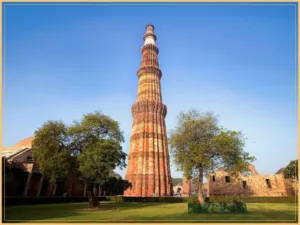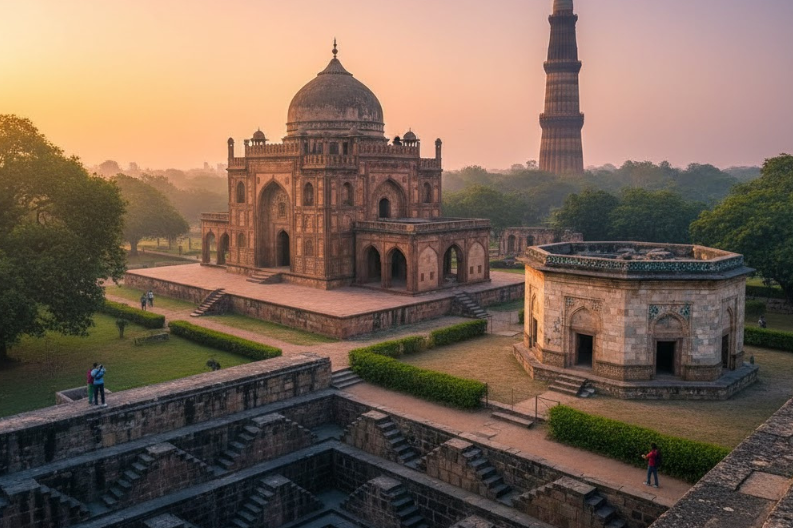Delhi is the epitome of Mughal and historic architecture. It was the capital of the Delhi sultanate, which built a plethora of fascinating monuments across Delhi during the zenith of its reign. One such monument is in the Qutub Minar of Delhi.
With a splendid height and robust nature, the Qutub Minar never fails to gather the awe of the visitors. People not only from India but various parts of the world come to visit this architectural masterpiece. Today, we will talk about the wonder that Delhi’s Qutub Minar is and everything you need to know about it.
About Delhi’s Qutub Minar
The Qutub Minar (also known as Qutab Minar or Qutb Minar) has been the world’s tallest brick tower for almost 800 years. It is a centuries-old monument that was built by the first ruler of the Delhi sultanate- Qutb-ud-din-Aibak. The monument stands tall in the Mehrauli village on the outskirts of Delhi.
It is one of the UNESCO World Heritage Sites of India and is one of the most visited tourist spots in Delhi. It was built when Qutb-ud-din-Aibak and his army escaped the Mongol Empire and claimed victory in India. The victory tower flaunts its traditional Islamic architecture, just like the Humayun’s Tomb.
Originally, the Tomar Rajputs had established a fortified city named Lal Kot in Mehrauli. However, after defeating the Rajputs, the Delhi Sultanate acquired it and built Qutub Minar on the citadel of Dhillika. The structure is compared to the Minaret of Jam in Afghanistan, which has similar architecture.

The builders began the construction in 1192 after completing the construction of the Quwwat-ul-Islam Mosque just beside it. The construction was started by Qutb-ud-din-Aibak, but he couldn’t see it finishing. His successor Shams-ud-din Iltutmish completed it in 1220 by adding three more floors to the structure.
While some believe that the name of the tower was kept after Qutb-ud-din-Aibak, who began its construction, others say that it was named after Khwaja Qutbuddin Bakhtiar Kaki, to whom Iltumish was devoted.
In 1803, the tower suffered major damage due to an earthquake in the region. However, in 1928, a member of the British Indian Army, Major Robin Smith, mended it. In 1981, the tower witnessed an accident that left 47 people dead inside the structure, and henceforth, entry into the tower has been restricted.
The Architecture
Delhi’s Qutub Minar is 73 meters tall. Its base diameter is 14.3 meters, which goes down to 2.7 meters at the top. It has in it a spiral staircase with 379 steps, which was accessible to people earlier until 1981.
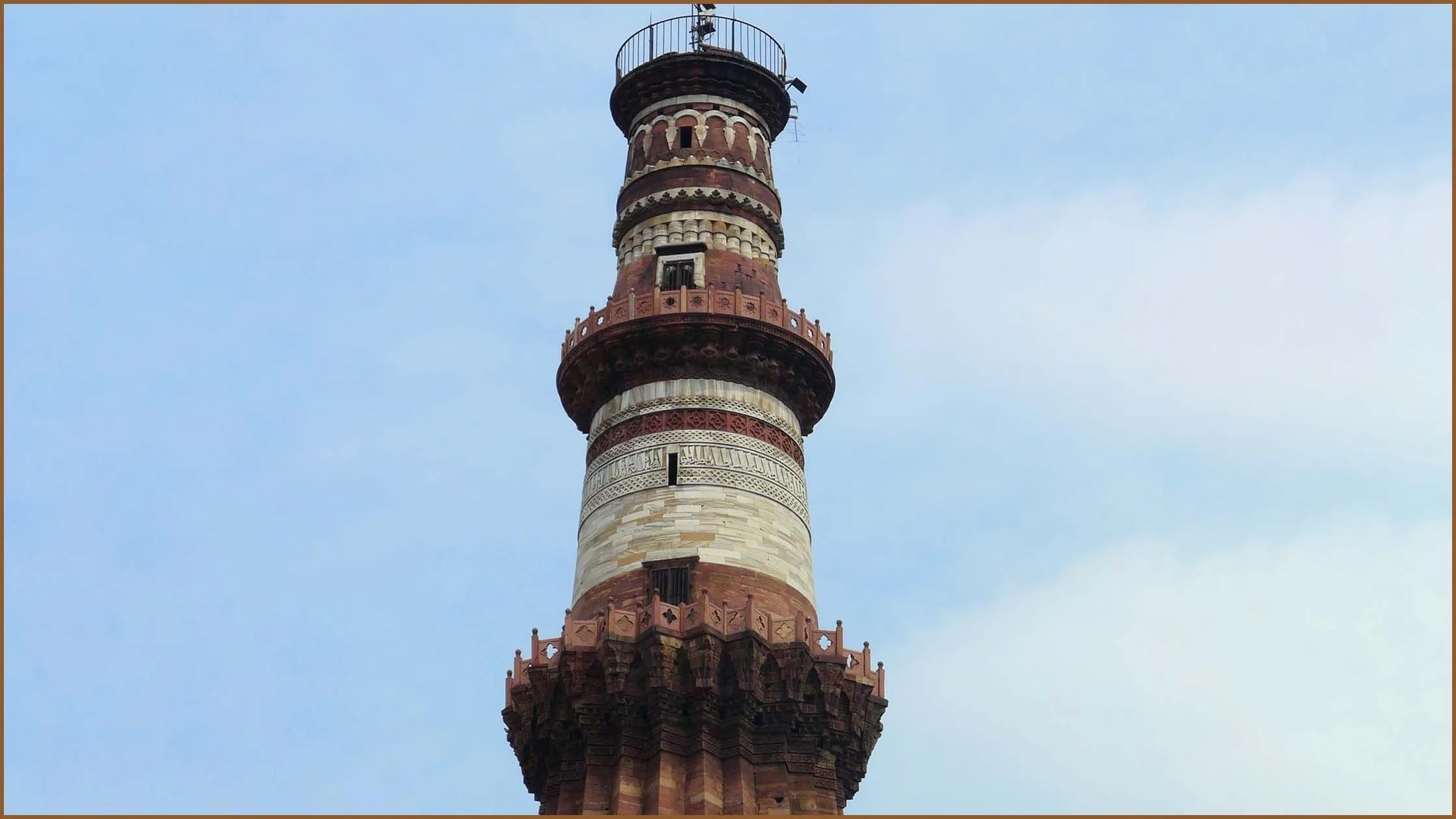
The Qutub Minar complex has in it not one but many pieces of Islamic architecture. Almost all the structures, including the Minar, are made up of red sandstone, just like many other monuments in Delhi.
The outside of Delhi’s Qutub Minar is engraved with bands of inscriptions that narrate the history of the sultanate and sings the praise of the rulers. For its historical importance and architectural bliss, UNESCO granted it the status of a World Heritage Site in 1993, making it a monument of prominence and historical and cultural importance.
The myriad attractions and main structure in Delhi’s Qutub Minar Complex include the following-
-
Quwwat-ul-Islam Mosque
This was the first mosque ever built in India. The rulers of the Slave dynasty destroyed the Hindu and Jain temples and constructed this mosque from their remains. Also known as Jami Masjid, and is the oldest testament of Ghorids architecture.
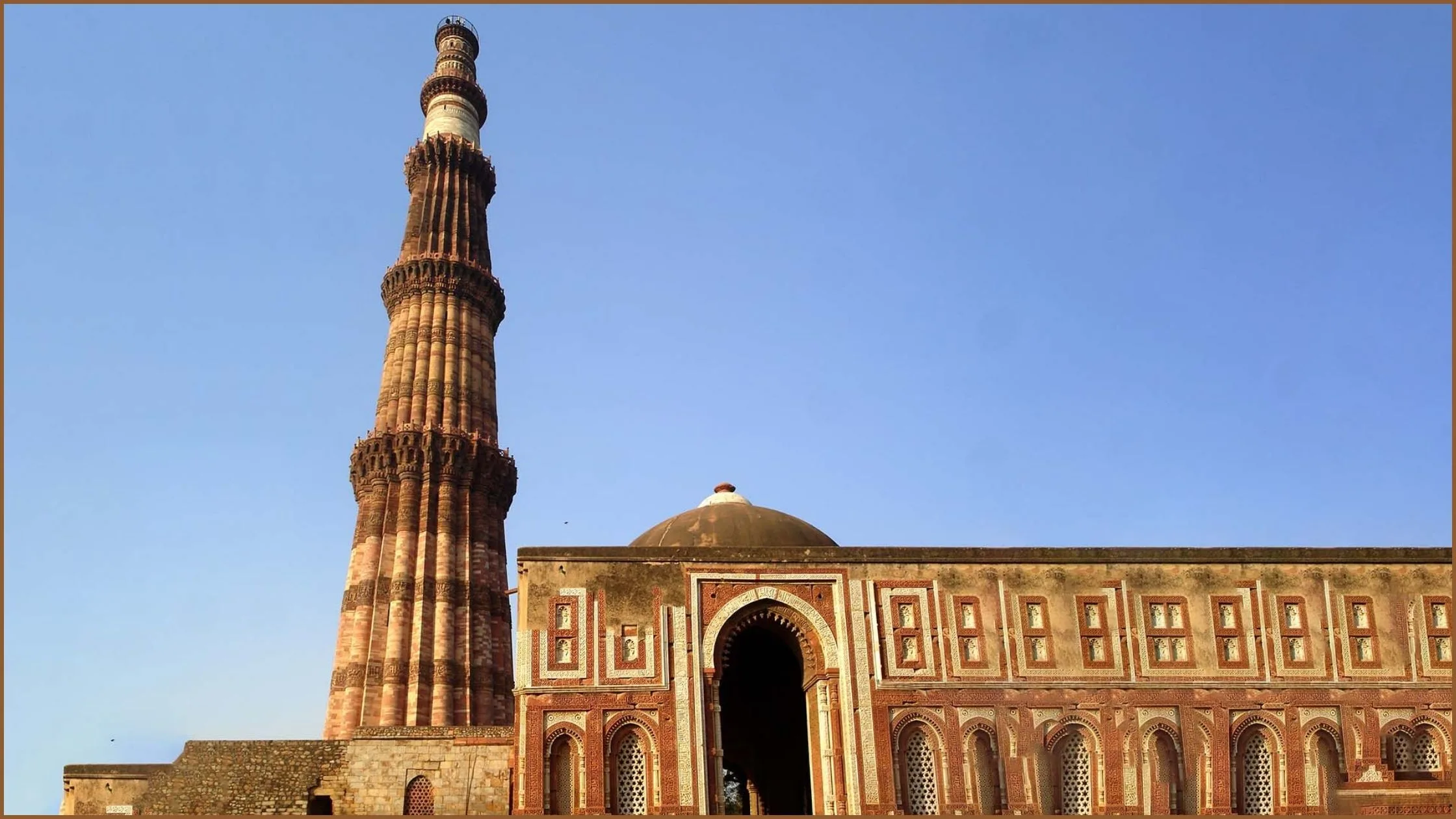
-
Ala’i Darwaza
This is the southern gate of the mosque built by Ala-ud-din Khilji in 1311 AD. It is made with a blend of red sandstone and white marble.
-
Iron Pillar of Chandragupta II
Long before the construction of Qutub Minar, the Iron Pillar was constructed in Mehrauli by Chandragupta II Vikramaditya. It is fascinating as it has not been rusted at all since its erection.
-
Tomb of Iltumish
This tomb was built to commemorate the second Sultan of Delhi, Iltutmish. It has remarkable Islamic architecture, with a white marble placed in the center of the tomb.
-
Alauddin Khilji’s tomb and madrasa
The Madrasa built under Ala-ud-din Khalji and the tomb attributed to him are also present in the complex. The Madrasa was built in 1315, and it is the only example of a tomb built beside a madrasa in India.
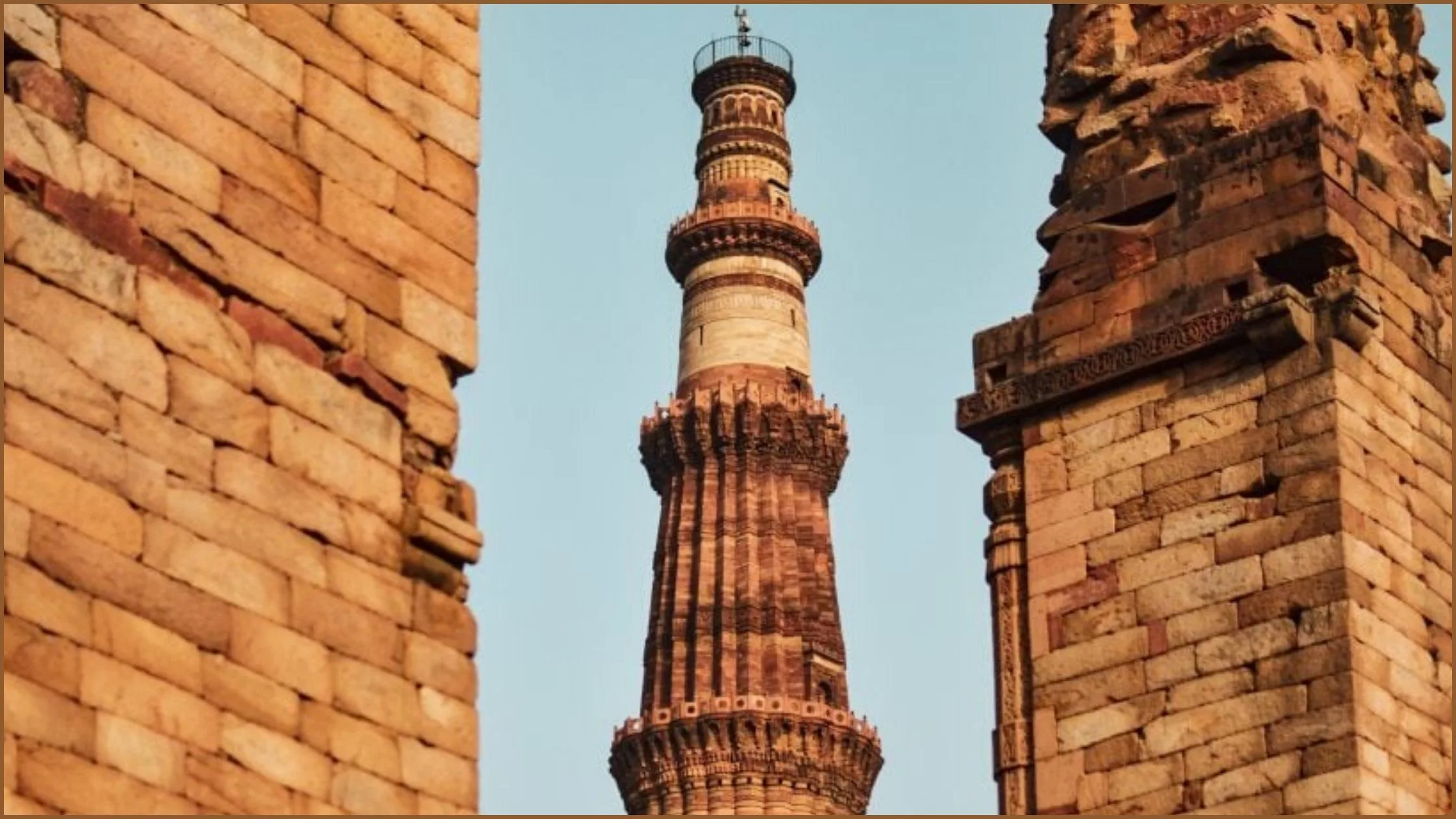
-
Tomb of Adham Khan
In the north of Qutub Minar lies the Tomb of Adham Khan, which is a beautiful structure made of white marble. It is a 16th-century tomb created in the name of a general of the Mughal Emperor Akbar.
-
Alai Minar
Alai Minar was a structure that Alauddin Khilji started creating parallel to Qutub Minar. He wanted to create a structure twice as tall as Delhi’s Qutub Minar. However, he died in 1316, and his successors never completed the structure. Thus, an incompleted first story of the Alai Minar stands at the Complex.
-
Smith’s Folly
The cupola that was installed by the British soldier to mend the tower was later removed by another British general. It is still kept on the premises of the Qutub Minar complex.
-
Sanderson’s Sundial
Within the complex is another splendid instrument- a sundial made of white marble. It is a small instrument that was used in earlier ties to identify the time based on the location of the sun.
Interesting Facts About the Qutub Minar
The Qutub Minar of Delhi is a scenic and exciting place for tourists as well as locals. It is a picnic and outdoor spot for families and is also an amazing place for photoshoots. Some of the lesser-known facts about the Qutub Minar include the following-
- The literal meaning of Qutub Minar in Arabic is “Pole” or “Axis.”
- In 2006, it was positioned as the most visited monument of the year, attracting 3.9 million visitors.
- In west Delhi’s Hastsal village, a mini Qutub Minar was created, inspired by the original monument. Similarly, Chand Minar was built in Daulatabad, inspired by this tower.
- In the year 2019, the Archaeological Survey of India began illuminating the complex to make it a prominent place of tourism at night. At present, Qutub Minar lights up and night with the help of the beautiful lights that surround it.
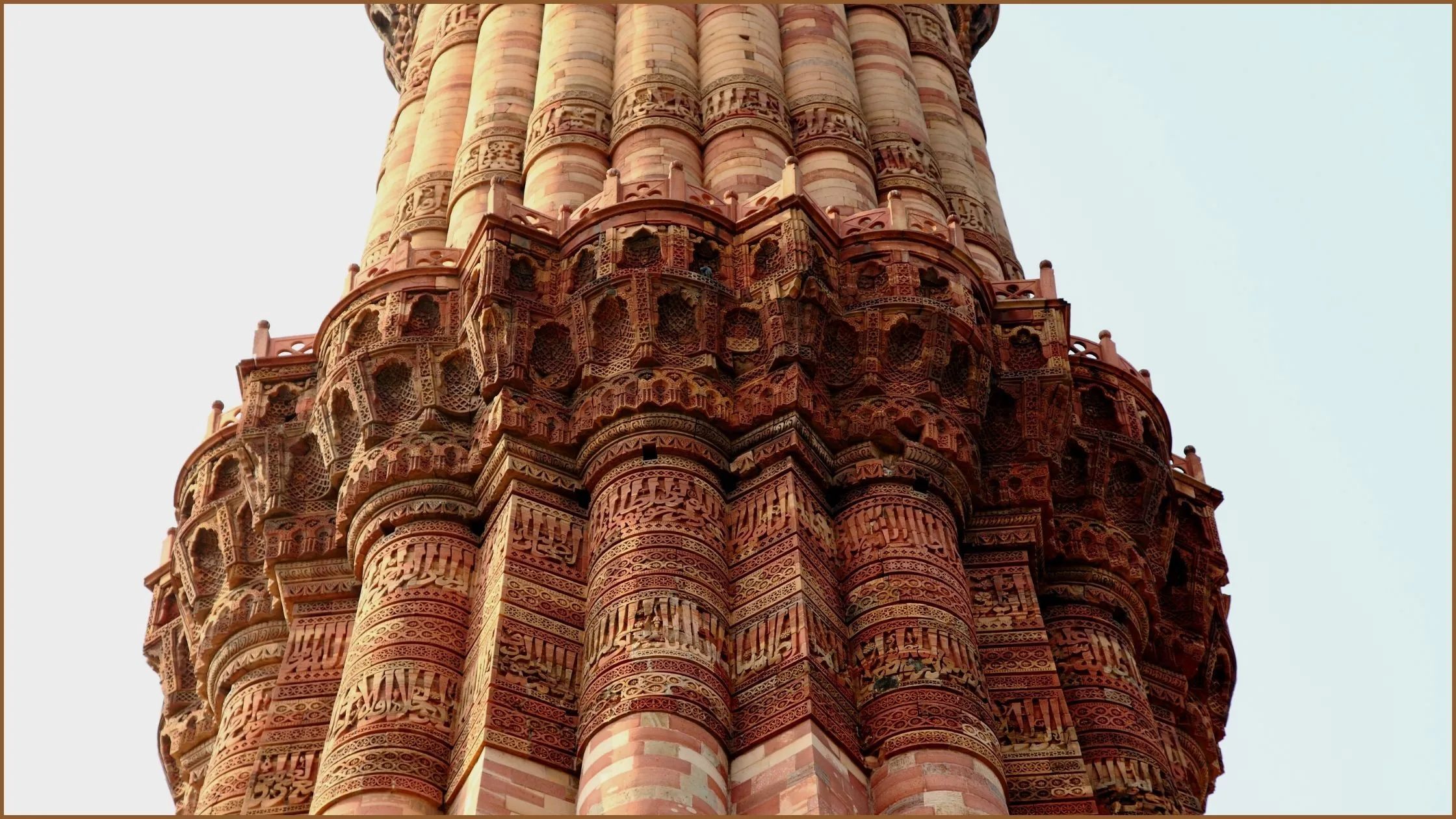
Final Words
The Qutub Minar of Delhi is a heritage monument that is a great visiting point for people across the world. While it looks beautiful on the outside, the historical facts related to it make people admire it even more. This architectural marvel has been standing intact in Delhi for a long time, and it will probably continue gaining the admiration and awe of visitors for hundreds of years more!

